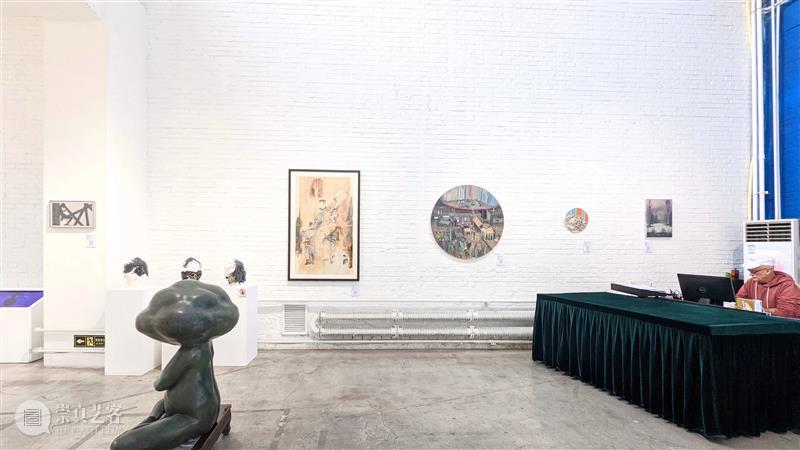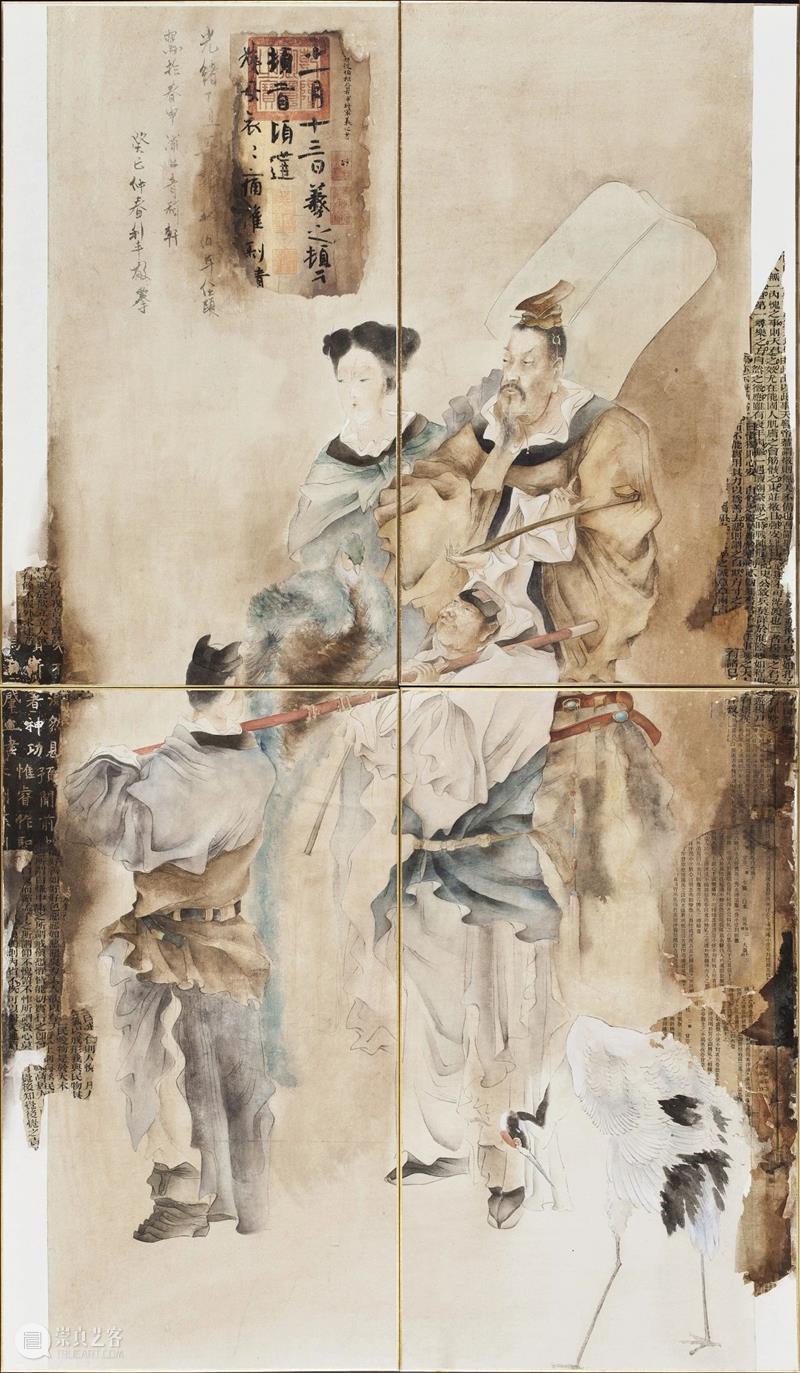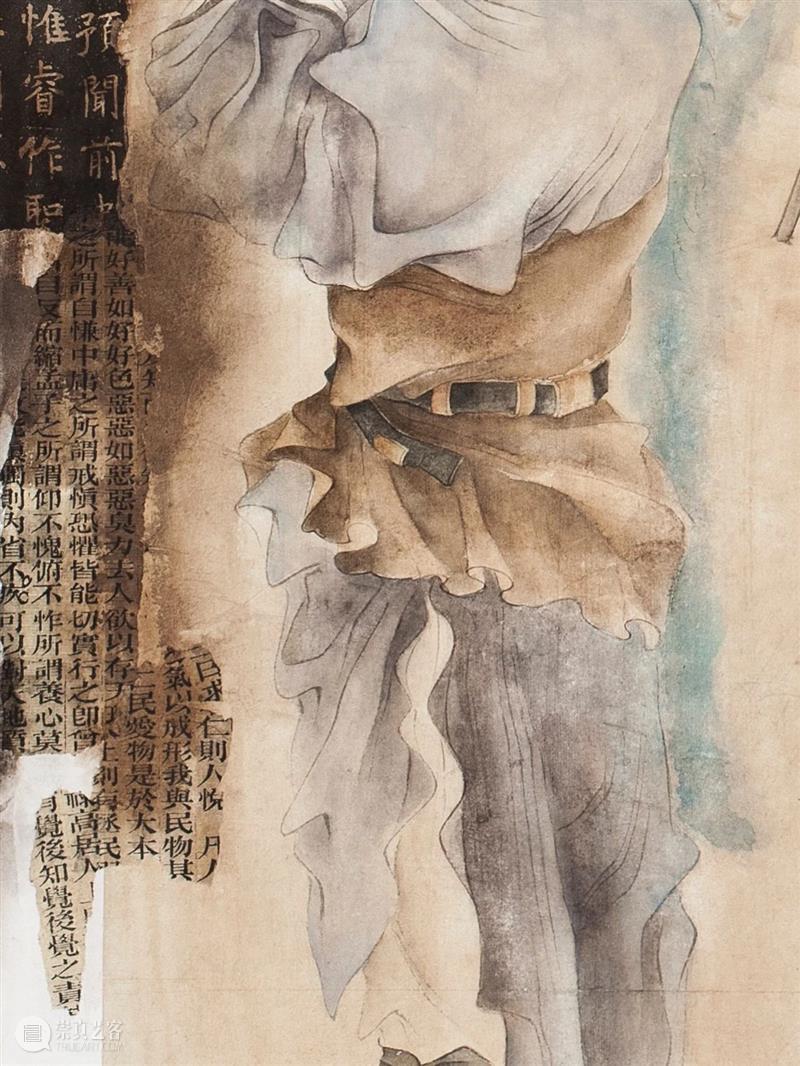



王利丰 Wang Lifeng
籍 人物之一 Ji - Portraits No. 1
2012
纸本综合材料 Mixed media on paper
130 x 76 cm

Wang Lifeng’s artistic trajectory is distinctive and unique in Chinese contemporary art. While many of his compatriots have focused on exploring cynicism expressed in the vocabulary of Pop Art, Wang mines history both real and imagined to concatenate past, present and future in his own personal idiom. An impresario of mixed media, he creates abstract compositions from which readable cultural signifiers emerge.
Fragments of silk commingle with old documents amid Wang’s expressive oil painting on the canvases. His careful juxtaposition and injection of his own gesture tell us that he is not attempting an objective narration but rather uniting collective memory and personal imagination.
Wang’s uniqueness lies in his ability to remain focused on the iconography of China’s past while simultaneously inventing a new visual language in which to portray it. He embraces ambiguity and paradox and transforms them into tools with which he forges his own subjective view of history.
裴大利 Tally Beck
表达史事、史识、史意,有其发生之环境,可称之为史境。王利丰的独创性在于运用视觉意象营造史境,展示史实深层蕴涵的意义。文化历史的意义在于它存在着人人均可理解的某些东西,当然也包括真假两个方面。艺术家不是为了迎合观众的口味而去挑选食物,而是为了改变这种口味。不是我替文化历史说话,而是文化历史通过我说话,通过有韵律、有意味、有个体性情的意象说话。因此从其画面可以直接感受到,那些扑面而来的意象,是反叙述、求内省的态度,是形式美学的自主性,是大历史意象瞬间的象征性,还有他精心选择的历史文化符号本身的特殊性和多义性。由此而来的史境,无论于《大汉》、《大宋》或《大明》,都被高度净化并升华为艺术家的主体胸臆与情怀:幽深而雄浑,感伤而辉煌,真挚而颓唐乃至绝望。显现出艺术家把握文化历史意象的高超才能。
The expressions of historical events, knowledge and meaning all have specific contexts: their own historical environments. The originality of Wang Lifeng lies in his utilization of visual imagery to construct a historical environment, laying bare deep layers and connotations of the meaning of historical fact. The meaning of cultural history lies in the fact that it exists in intelligible things—things we understand, including the true and the false. Wang Lifeng does not cater to the tastes of his audiences but challenges them.
He does not attempt to speak for cultural history; however, he allows cultural history to speak through him with its own unique rhythm, flavour and individual temperament. Consequently, just by looking at the wispy, faint imagery in Wang Lifeng’s pieces, one realizes what is being presented is anti-narration demanding introspection. Imagery portrays the autonomy of aesthetics and history’s twinkling symbolism—a concept painstakingly pursued by Wang Lifeng that makes his work so unique and multi-faceted. Each of his series (The Great Han Dynasty, The Great Song Dynasty or The Great Ming Dynasty) has been highly purified and distilled leaving behind only the feelings and mood of the main body: quiet but forceful, sorrowful yet brilliant, sincere yet dispirited almost to the point of despair. What it reveals is an artist highly attuned and skilled at portraying culture and history through imagery.



1962 Born in Inner Mongolia
Spiral - Collecting from 2010 to 2019
展览日期:11月4日-12月3日,2023年
Exhibition Dates: 11.4 – 12.3, 2023
开幕时间:11月4日(星期六),下午3点-5点
Opening: 3 - 5 pm, November 4, Saturday
展览地点:红门画廊 @ 798
浦捷 Pu Jie, 吕松 Lv Song, 李金国 Li Jinguo, 陶艾民 Tao Aimin, 关伟 Guan Wei, 王利丰 Wang Lifeng, 蒋巍涛 Jiang Weitao, 徐跋骋 Xu Bacheng, 王强 Wang Qiang, 蒋龙 Jiang Long, 刘瑾Liu Jin, 张恒泰 Zhang Hengtai, 叶森 Ye Sen, 陶弘景 Tao Hongjing, 刘涛 Liu Tao, 康超 Kang Chao, 蔡雅玲 Cai Yaling, 农少华 Nong Shaohua, 王阔阔Wang Kuokuo, 张永基 Zhang Yongji, 张朝晖 Zhang Zhaohui, 王雪翰 Wang Xuehan
Opening Review 开幕现场


已展示全部
更多功能等你开启...







 分享
分享